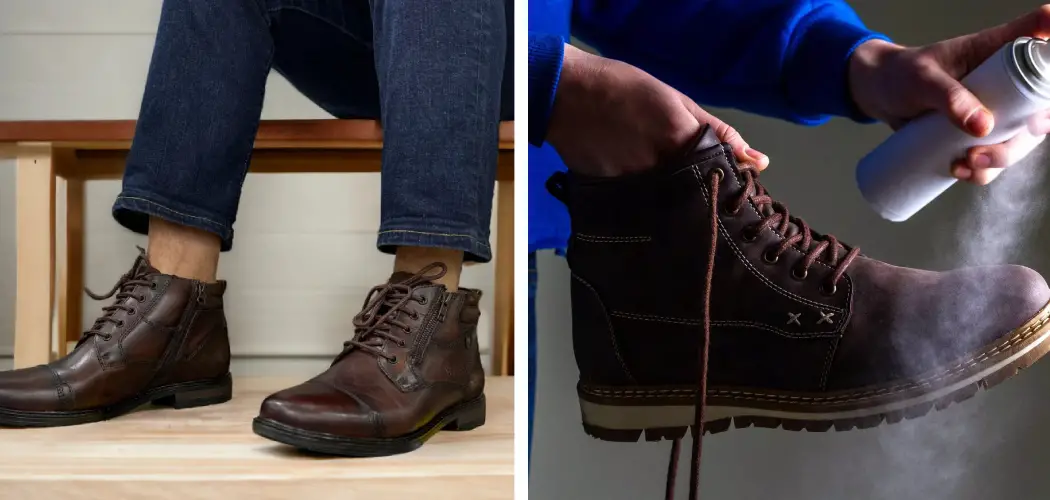Impregnating shoes, also known as waterproofing or treating shoes with a protective coating, is essential for preserving their quality and durability. Whether it’s a pair of leather boots, suede loafers, or canvas sneakers, impregnating shoes can help repel water, dirt, and stains, prolonging their lifespan and keeping them looking new for longer. By applying the right products and techniques, you can ensure that your shoes remain resilient against the elements, maintaining their appearance and functionality in various weather conditions.
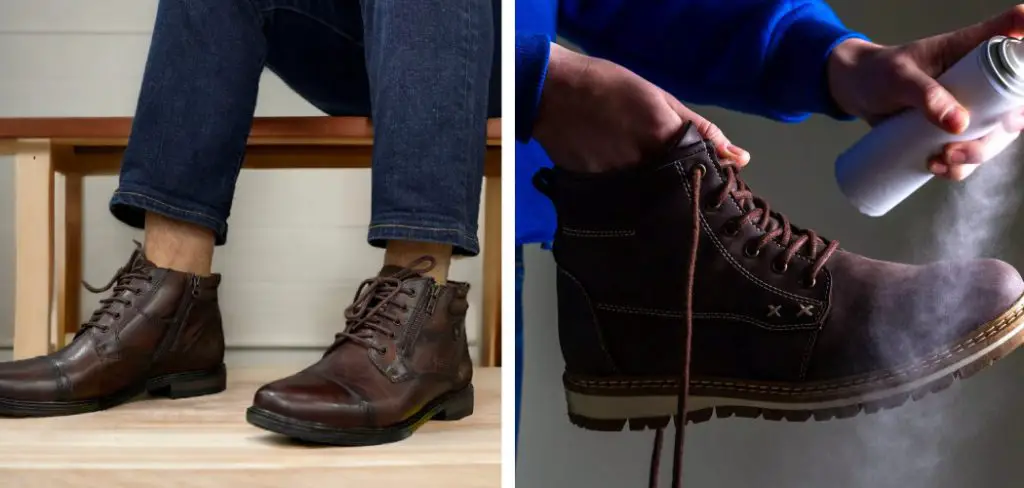
In this article, we’ll explore the steps and methods for how to impregnate shoes, providing valuable tips to help you protect your footwear investment and enjoy stylish, weather-ready shoes year-round.
The Importance of Shoe Impregnation
Shoe impregnation is not merely about maintaining the aesthetic appeal of footwear; it is a critical measure in preserving the material’s integrity and overall functionality. When shoes are regularly exposed to moisture, they can suffer damage not only on the surface but also in their structure. Water can seep into the material, leading to issues like leather cracking, fabric deterioration, and the breakdown of adhesives that hold the shoe together.
Furthermore, impregnating shoes plays a vital role in enhancing comfort and foot health by preventing water from soaking through, keeping feet dry and comfortable in wet conditions. By investing in the impregnation process, you are not only extending the life of your shoes but also promoting a healthier environment for your feet, saving money in the long run by reducing the frequency of replacements due to wear and tear.
Defining Shoe Impregnation
Shoe impregnation specifically refers to the process of applying a protective layer or coating to the outer surface of shoes to enhance their resistance to water, dirt, and stains. This procedure involves using special sprays, waxes, or creams designed to create a barrier that keeps the elements at bay. The impregnation products used can vary depending on the shoe material, including leather, suede, fabric, and synthetics, each requiring a different approach to ensure that the protective layer bonds effectively without compromising the shoe’s material and breathability.
Not only does impregnation protect shoes from the outside elements, but it also helps in maintaining their color and texture, thereby extending their wearable life and performance. Properly impregnated shoes will repel moisture and dirt on contact, making them easier to clean and maintain over time.
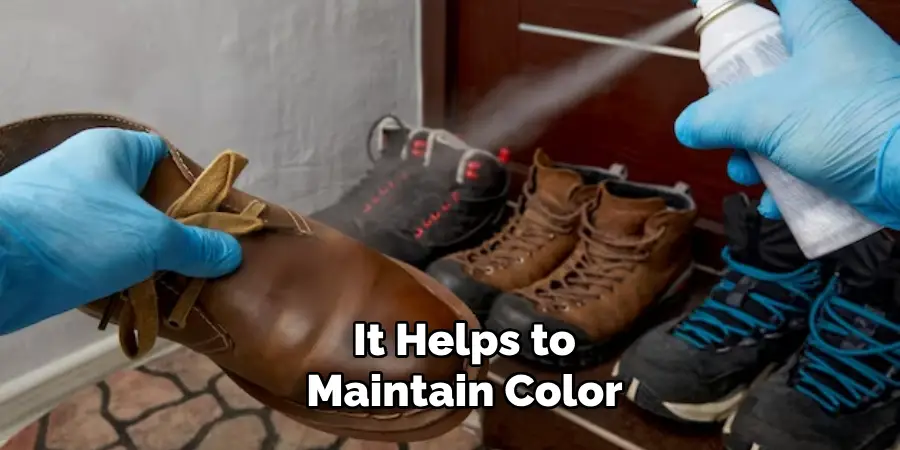
Different Types of Shoe Materials
Understanding the different types of shoe materials is crucial for selecting the right impregnation method. The most common materials include leather, suede, canvas, and synthetic fabrics, each with unique characteristics and care requirements.
- Leather is a popular choice for its durability and flexibility, offering a level of breathability and water resistance that can be enhanced through impregnation. However, leather requires regular maintenance to prevent cracking and drying out.
- Suede, made from the underside of the animal skin, presents a softer and more porous texture than leather, making it more susceptible to water damage and staining. It necessitates a specific type of waterproofing spray designed for suede.
- Canvas shoes are lightweight and breathable, ideal for casual wear in dry conditions. Waterproofing canvas shoes can help protect against light rain and stains, but they generally remain less water-resistant than leather or synthetic materials.
- Synthetic fabrics are often used in athletic and outdoor footwear for their water-repelling properties and ease of maintenance. Impregnation can enhance their resistance to water and dirt, ensuring that the shoes remain in good condition even under harsh weather conditions.
Choosing the correct impregnation product depends on understanding these materials and their individual needs, ensuring that your footwear receives the best possible protection without compromising the material’s integrity or appearance.
Importance of Regular Maintenance
Regular maintenance is pivotal in extending the life and maintaining the appearance of impregnated shoes. While impregnation acts as the first line of defense against moisture, dirt, and wear, it’s not a once-and-done solution. Over time, the protective layer applied during the impregnation process begins to wear off, reducing its effectiveness in shielding the shoes. This degradation makes shoes more susceptible to damage, and without timely reapplication of the protective products, the materials can begin to deteriorate.
Incorporating regular maintenance into your shoe care routine ensures that the protective layer is consistently replenished, keeping your shoes in optimal condition. Cleaning the shoes to remove dirt and buildup before reapplying impregnation products also prevents the materials from breaking down and losing their aesthetic appeal. Additionally, regular maintenance allows for the early detection of wear or damage, enabling repairs or further protective measures to be taken before issues compound.
Ultimately, regular maintenance is not just about preserving the footwear’s external appearance but also about maintaining its internal integrity, comfort, and overall functionality, ensuring that your shoes remain comfortable, stylish, and durable over time.
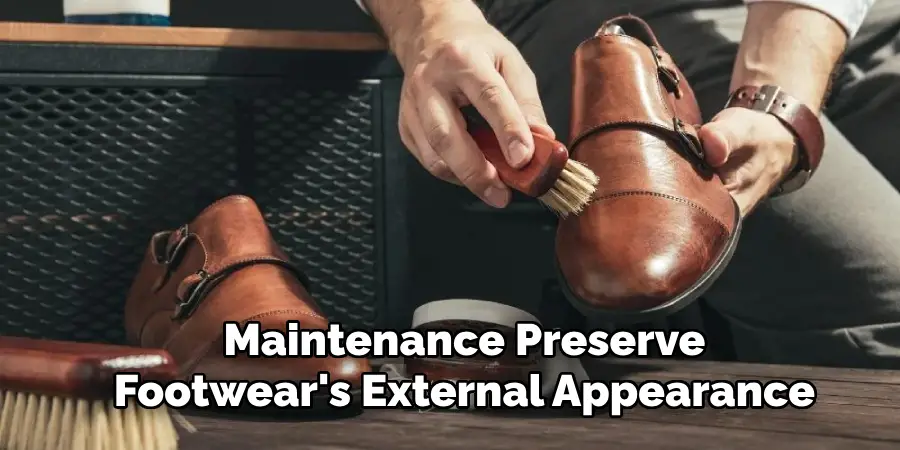
Benefits of Shoe Impregnation
Shoe impregnation offers numerous benefits that go beyond simple aesthetics. Firstly, it significantly enhances the durability of the footwear. By forming a protective barrier against water, dirt, and stains, impregnation helps in preventing premature wear and tear, thereby extending the lifespan of the shoes. This process is especially beneficial for those living in areas with unpredictable weather conditions, as it ensures that the shoes remain in good condition despite exposure to rain, snow, or mud.
Another advantage is the increased comfort and health benefits for the wearer. By keeping the feet dry, impregnated shoes contribute to better foot health, reducing the risk of fungal infections associated with wet conditions. This is particularly important for individuals who spend a lot of time outdoors or in wet environments.
Furthermore, impregnated shoes are easier to clean and maintain. The protective layer repels dirt and liquids, meaning that most of the time, a simple wipe or brush is sufficient to remove any surface dirt. This ease of maintenance not only saves time but also reduces the need for harsh cleaning products which can further harm the shoe material.
Economically, shoe impregnation is cost-effective in the long run. By maintaining the material’s quality and extending the shoe’s durability, there is less need for frequent replacements. Investing in a good quality impregnation product and applying it regularly can save money, making it a wise choice for those looking to get the most out of their footwear investment.
Lastly, shoe impregnation maintains the aesthetic appeal of the shoes. It helps in preserving the color and texture of the material, ensuring that the shoes look new and stylish for longer. This is particularly beneficial for high-end footwear or shoes worn on special occasions, where their appearance is of utmost importance.
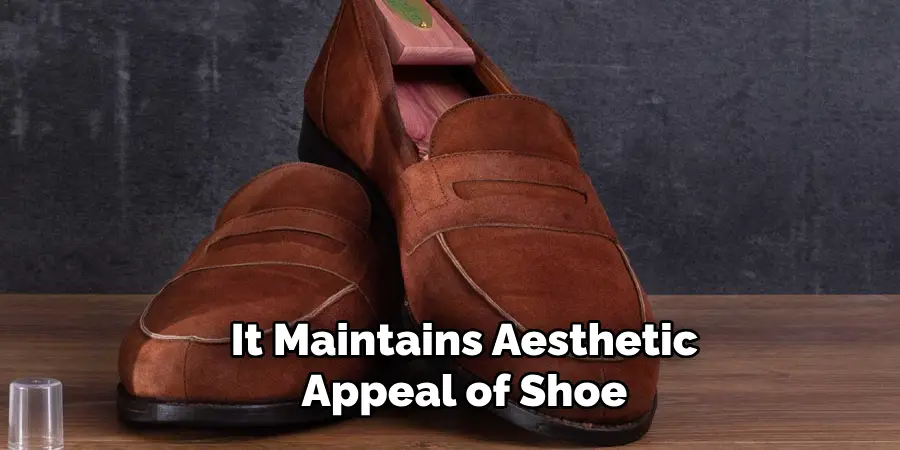
10 Methods How to Impregnate Shoes
1.Choose the Right Product:
When selecting a waterproofing or impregnation product for your shoes, it’s essential to consider the material of your footwear. Different types of shoes, such as leather, suede, canvas, and synthetic fabrics, may require specific formulations for optimal protection. For example, silicone-based sprays are suitable for leather shoes, while fluoropolymer-based treatments work well on suede and fabric.
2.Clean the Shoes:
Before applying any impregnation product, it’s crucial to clean your shoes thoroughly. Use a soft brush or damp cloth to remove any dirt, dust, and debris from the surface of the shoes. Pay special attention to seams, creases, and other areas where dirt may accumulate. Allow the shoes to dry completely before proceeding with the impregnation process.
3.Test in a Small Area:
Before treating the entire shoe, it’s advisable to test the impregnation product on a small, inconspicuous area. This allows you to ensure compatibility with the shoe material and check for any adverse reactions such as discoloration or damage. Apply a small amount of the product to the test area and observe the results before proceeding with the full application.
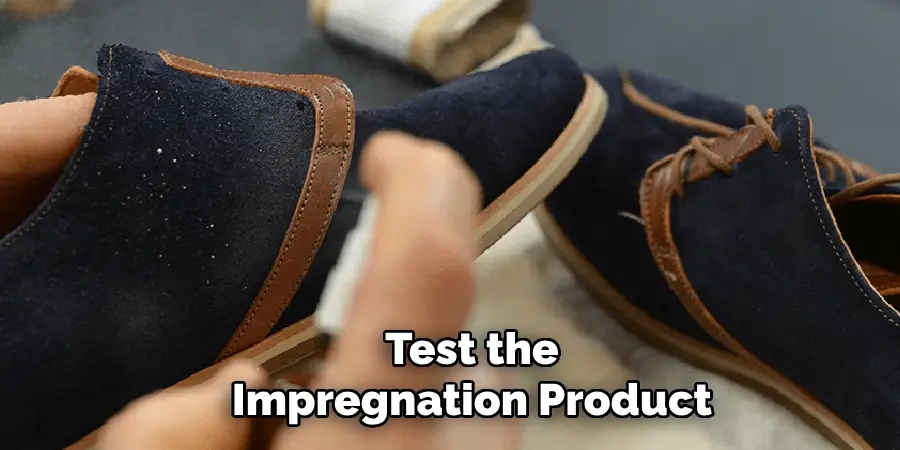
4.Apply Evenly:
When applying the impregnation product, it’s essential to ensure even coverage across the entire surface of the shoes. Use a clean cloth, sponge, or applicator brush to apply the product, working it into the material thoroughly. Pay close attention to seams, stitching, and other areas where water may penetrate. Avoid oversaturating the material, as this can affect the breathability of the shoes.
5.Allow Sufficient Drying Time:
After applying the impregnation product, allow the shoes to dry completely in a well-ventilated area. The drying time may vary depending on the product and environmental conditions, so be sure to follow the manufacturer’s instructions. Avoid wearing or storing the shoes until the product has fully dried to prevent any transfer or staining.
6.Repeat for Maximum Protection:
For optimal waterproofing and protection, consider applying multiple coats of the impregnation product. Allow each layer to dry thoroughly before applying the next coat. Multiple coats can help build up a more durable barrier against moisture and prolong the effectiveness of the treatment.
7.Heat Activation:
Some impregnation products may require heat activation to penetrate the shoe material effectively. After applying the product, use a hairdryer or heat gun on a low setting to gently warm the treated areas. This heat activation helps the product penetrate the material more deeply, enhancing its waterproofing properties.
8.Specialized Treatments:
Certain shoe materials, such as suede and nubuck, may benefit from specialized waterproofing treatments designed specifically for these materials. Look for products formulated to maintain the texture and appearance of suede and nubuck while providing effective waterproofing. These specialized treatments help protect delicate materials without compromising their natural characteristics.
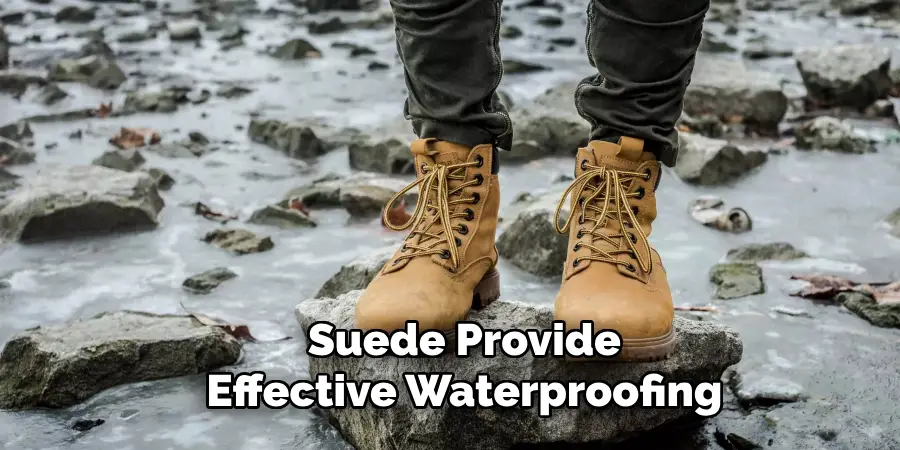
9.Maintenance and Reapplication:
Regular maintenance and reapplication of the impregnation product are essential for preserving the waterproofing properties of your shoes. Inspect your shoes regularly for signs of wear and reapply the product as needed, especially after exposure to moisture or heavy use. Proper maintenance and reapplication will help prolong the effectiveness of the waterproofing treatment and extend the life of your shoes.
10.Storage and Care:
Proper storage and care are key to maintaining the waterproofing of your shoes over time. Store your impregnated shoes in a cool, dry place away from direct sunlight and heat sources. Avoid storing them in airtight containers or plastic bags, as this can trap moisture and compromise the waterproofing treatment. Regularly clean and condition your shoes to remove dirt and debris and maintain their appearance and integrity.
Maintenance and Care Tips
Proper care and regular maintenance are crucial for extending the life and preserving the appearance of your waterproofed shoes. Here are some essential tips to keep your shoes in top condition:
- Regular Cleaning: Even with impregnation, shoes can accumulate dirt and debris that can wear down the protective layer over time. Clean your shoes gently but thoroughly after each use, especially if they’ve been exposed to mud or dirt.
- Avoid Harsh Chemicals: Stick to mild cleaning agents specifically designed for shoe care. Using harsh chemicals or detergents can degrade the waterproofing treatment and harm the shoe material.
- Dry Shoes Properly: Never dry your shoes by placing them near a heat source like a radiator or in direct sunlight. This can damage the shoe material and weaken the waterproofing agent. Instead, allow them to air dry naturally in a well-ventilated area.
- Use a Shoe Tree: Wooden shoe trees not only help your shoes retain their shape but also absorb moisture from within, which is especially useful for leather shoes.
- Condition Leather: If your waterproofed shoes are made of leather, use a suitable leather conditioner to keep the material supple and prevent it from drying out and cracking.
- Reapply Waterproofing Treatment: Over time, the effectiveness of the waterproofing treatment will diminish, especially with regular wear and exposure to the elements. Make it a routine to reapply the waterproofing product as per the manufacturer’s guidelines.
- Rotate Your Shoes: Give your shoes time to rest and breathe by not wearing the same pair every day. Rotating between different shoes can significantly extend their lifespan.
- Check for Wear and Tear: Regularly inspect your shoes for any signs of damage, such as loose seams or holes, which could compromise their waterproof capabilities. Early detection makes repairs easier and helps maintain the waterproof integrity of your shoes.
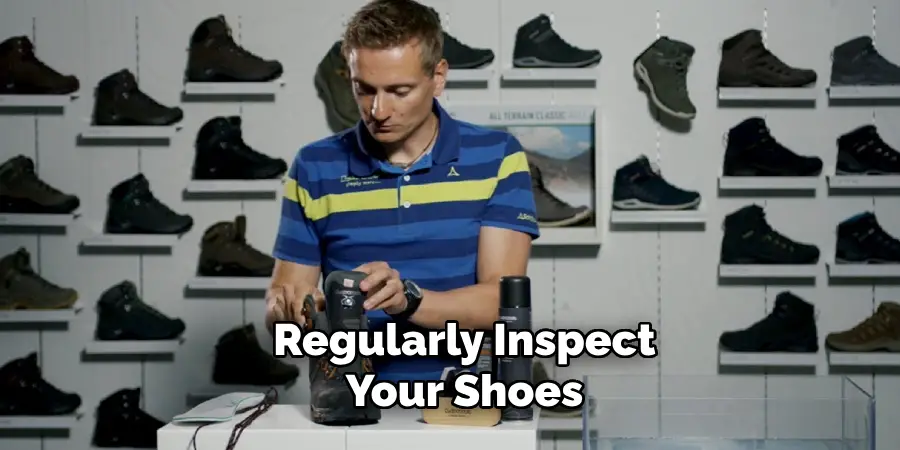
Cleaning and Drying Your Shoes Before Impregnation
Proper preparation of your shoes before applying any waterproofing treatment is critical for the impregnation to be effective. Here are steps to ensure your shoes are ready for impregnation:
- Remove Dirt and Debris: Begin by removing any loose dirt or debris from your shoes using a soft brush or a damp cloth. Pay special attention to the soles and any crevices where dirt tends to accumulate.
- Wash Your Shoes: If your shoes are extremely dirty, a more thorough wash may be necessary. Use a mild detergent and warm water to gently clean the surface. For specific materials like suede or nubuck, use products formulated for those materials to avoid damaging them.
- Rinse Thoroughly: After washing, rinse your shoes well with clean water to remove any soap residue. Leftover detergent can interfere with the effectiveness of the impregnation product.
- Dry Your Shoes Completely: Before applying any impregnation treatment, ensure your shoes are completely dry. Air dry your shoes in a well-ventilated area away from direct heat and sunlight. Stuffing your shoes with newspaper can help absorb moisture and maintain their shape during the drying process.
Common Mistakes to Avoid
When waterproofing your shoes, avoiding common mistakes can significantly improve the effectiveness and longevity of the treatment. Here are some pitfalls to steer clear of:
- Applying Impregnation on Dirty Shoes: One of the most common errors is applying waterproofing treatments without first cleaning the shoes thoroughly. Dirt and debris can prevent the waterproofing agent from adhering properly to the shoe surface.
- Using the Wrong Product: Not all waterproofing products are suitable for every shoe material. Using a product that is not intended for the type of material your shoes are made from can damage the material and render the waterproofing ineffective.
- Ignoring Drying Times: Impatience can lead to applying impregnation treatments to damp shoes or not allowing enough time for the treatment to dry completely. This can significantly reduce the effectiveness of the waterproofing.
- Overapplication: While it might seem logical that more product means better protection, overapplying waterproofing treatments can actually suffocate the material, making shoes less breathable and more susceptible to damage from trapped moisture.
- Neglecting Reapplication: Waterproofing treatments are not permanent. Failing to reapply the product regularly, especially after heavy usage or exposure to water, will leave your shoes vulnerable to water damage.
- Improper Storage: Storing shoes in an inappropriate environment, such as a damp basement or a stuffy attic, can compromise the waterproofing treatment’s effectiveness and damage the shoe material.

Conclusion
In conclusion, mastering the art of shoe impregnation is essential for protecting your footwear investment and ensuring longevity. By understanding the benefits of impregnation and following the proper techniques for application, you can shield your shoes from water, stains, UV rays, and premature wear and tear. Consistent maintenance and care, including regular re-application and proper storage, are key to maintaining optimal protection over time. It’s crucial to avoid common mistakes like over-application and using the wrong product for your shoe material. Thanks for reading our blog post on how to impregnate shoes! We hope you found it helpful and informative.

